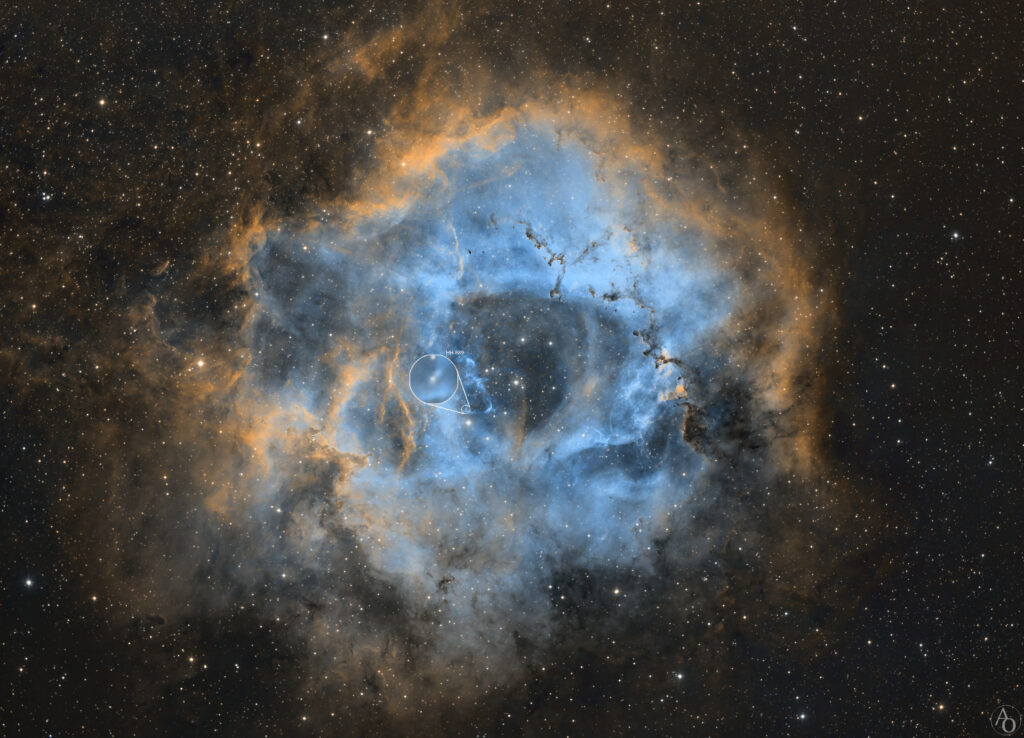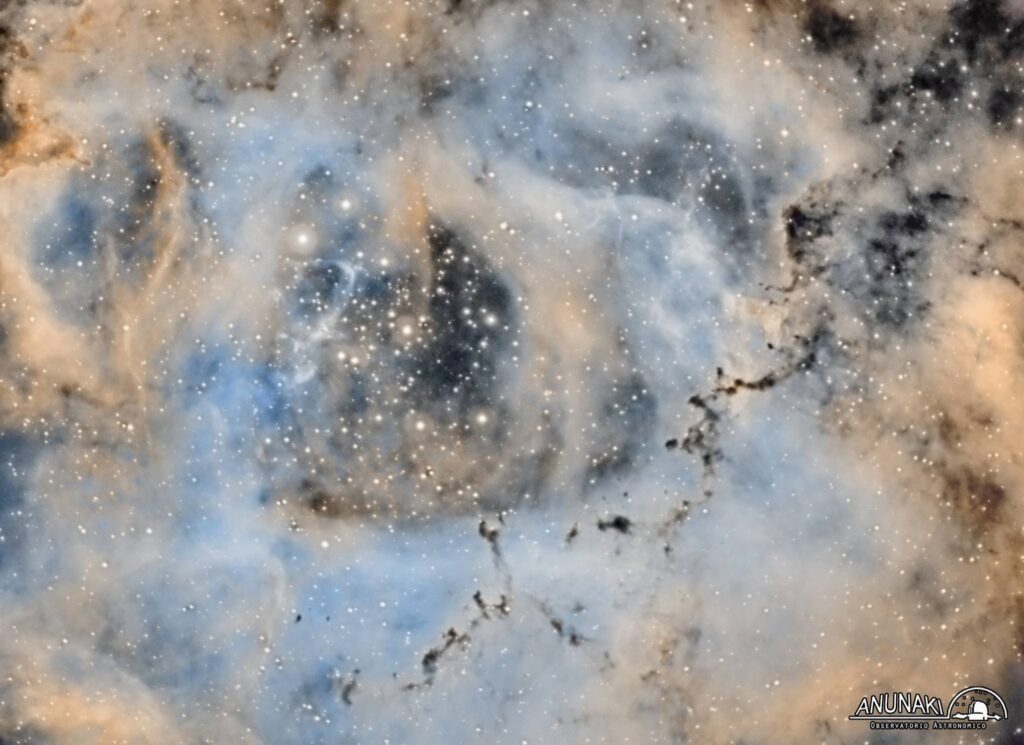NGC 2244 (also known as Caldwell 50) is an open cluster in the Rosette Nebula, located in the constellation Unicorn. This cluster has several stars of the spectral type O, super hot stars that generate large amounts of radiation and stellar wind.

Technical data of the acquisition:
Baader H-alpha 6.5nm (CMOS-Optimized) 36 mm: 25×900,″(6h 15′)
Baader O-III 6.5nm (CMOS-Optimized) 36 mm: 25×900,″(6h 15′)
Baader S-II 6.5nm (CMOS-Optimized) 36 mm: 25×900,″(6h 15′)
Time integration:
18h 45′
NGC 2244 in the Hubble SHO palette is an open cluster in the Rosette Nebula, located in the constellation Monoceros. This cluster has several type O stars, super hot stars that generate large amounts of radiation and stellar wind.
You can see the Herbig Haro 889 object discovered in 2004 by NOAO astronomers who announced a recent discovery of a very young star with a Herbig-Haro type jet.

The stars in NGC 2244 formed from the surrounding gas just four million years ago and emit light and wind that define the nebula’s appearance. High-energy light from the bright young stars of NGC 2244 ionizes hydrogen clouds to create the appearance of a red-emitting nebula. The wind of hot particles flowing from the cluster contributes to a complex swarm of gas and dust filaments as they slowly leave the center of the cluster.

Technical data:
Telescope: SkyWatcher ED80
Camera: Canon 40D
Focal Length Reducer: SW 0.8x
Telescope Guide: SW 60mm
Mount: LX200 GPSR
Guide CCD: QHY5
Location: Anunaki Observatory / Rivas Vaciamadrid (Madrid)
NGC 2244 measures about 50 light years wide and is located 4500 light years away, it is visible with binoculars towards the constellation of the Unicorn.
The brightest and most massive stars in the cluster are HD 46223, of spectral type O4, with a luminosity 400,000 times that of the Sun and approximately 50 times more massive, and HD 46150, of spectral type O5, 450,000 times more luminous than our star, and up to 60 times more massive, although the latter may actually be a binary star.

